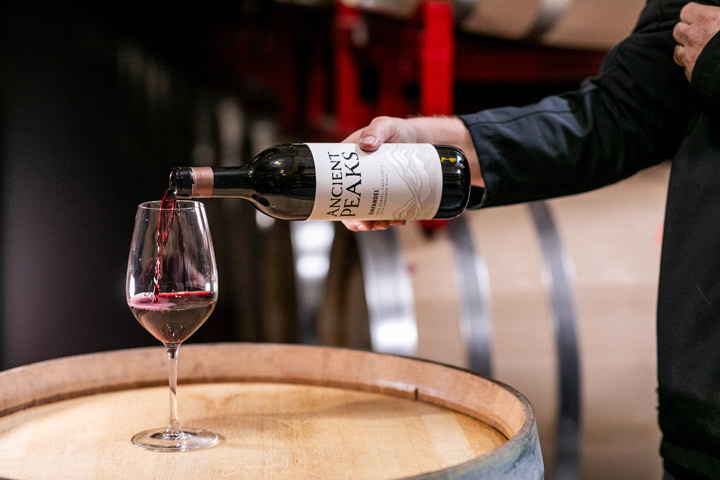Zinfandel has been a cornerstone variety of Paso Robles for more than a century, and it has been a mainstay at Ancient Peaks since day one. Here, at our estate Margarita Vineyard in the Santa Margarita Ranch AVA, our marine-cooled climate and diverse soils enable the Zinfandel grape to achieve ripe flavors while maintaining a vivid sense of spicy brightness and elegance.
But behind these growing conditions is another powerful differentiator: clonal selection. For example, our new release 2018 Zinfandel draws from multiple vineyards blocks spanning three classic California Zinfandel clones, each of which brings its own signatures to the final blend.
We caught up with Winemaker Stewart Cameron to learn more about the clones behind the wine:
Block 32 – Deaver Clone
The Deaver clone originates from the Deaver Ranch in Amador County, one of the oldest-producing vineyards in California. “The Deaver clone gives us a lot of red fruit flavors with a nice core of fresh acidity,” Stewart says. “That sense of freshness is key to our Zinfandel.”
Block 48 – Teldeschi Clone
The Teldeschi clone originates from the famed Teldeschi Vineyard in Sonoma County’s Dry Creek Valley. “This clone gives us a lot of nice spice characteristics, with bramble berry flavors and a wild, slightly herbal quality,” Stewart says. “It’s more about these secondary notes versus bright pure flavors.”
Blocks 39 and 49 – Rockpile Clone
This clone comes from the namesake Rockpile AVA in Sonoma County, which is famed for its signature Zinfandel clone originating from the vineyard of St. Peter’s Catholic Church in Cloverdale. Ancient Peaks co-owner Doug Filipponi personally selected, propagated and planted the Rockpile clone at Margarita Vineyard in 2006. “The Rockpile clone gives us a darker, rich, plum-driven profile with an unctuous mouthfeel and notes of hoisin sauce,” Stewart says. “It sets the tone for our Zinfandel.”
Together, these three clones enable us to produce a Zinfandel that is thoughtful and multidimensional. “If we relied on a single clone, we would have less layers in the wine,” Stewart says. “We had a strategy early on to plant these different clones to draw on these unique expressions of the Zinfandel grape. It’s a big part of what makes our Zinfandel distinct and different.”
